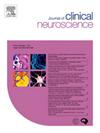Comparison of time perception in individuals between focal and generalized epilepsy
IF 1.9
4区 医学
Q3 CLINICAL NEUROLOGY
引用次数: 0
Abstract
Background
Numerous cognitive impairments have been documented in patients with epilepsy, particularly in relation to memory and executive functions. However, research on time perception is relatively limited and primarily focuses on temporal lobe epilepsy. The current study seeks to compare time perception performance between patients with focal epilepsy and those with generalized epilepsy.
Methods
A total of fifty-one individuals diagnosed with focal epilepsy and fifty-one individuals diagnosed with generalized epilepsy, which were monitored at the Epilepsy and Sleep Center, participated in this study. Initially, participants were asked to complete the Patient Health Questionnaire-9 (PHQ-9). Following this, they underwent computer-based assessments of time perception, which included the Time Estimation Test (TIET) and the Time Interval Production Test (TIPT). The intervals assessed were 4, 7, 32, and 58 s.
Results
The mean age of the sample was 32.65 years (±1.28). The sample consisted of 36 male and 66 female participants. The mean number of years of education was 12.3 years, while the mean age at disease onset was 18.7 years, and the mean duration of the disease was 13.8 years. The TIPT ratio was significantly lower in the focal epilepsy group, with recorded values of 4 s (Z = −2.540; p = 0.011) and 7 s (Z = −2.274; p = 0.023). No significant differences were observed in other parameters of time perception.
Conclusions
Research has demonstrated notable differences in time perception between individuals diagnosed with focal epilepsy and those with generalized epilepsy. The results suggest that time perception is more profoundly affected in patients with focal epilepsy in comparison to their counterparts with generalized epilepsy. Further comprehensive studies are necessary to explore the neural mechanisms that contribute to this disparity.
局灶性癫痫与全身性癫痫个体时间知觉的比较。
背景:癫痫患者存在许多认知障碍,尤其是在记忆和执行功能方面。然而,有关时间知觉的研究相对有限,而且主要集中于颞叶癫痫。本研究旨在比较局灶性癫痫患者和全身性癫痫患者的时间感知能力:共有51名被诊断为局灶性癫痫的患者和51名被诊断为全身性癫痫的患者参加了本研究,这些患者都在癫痫和睡眠中心接受监测。首先,参与者被要求填写患者健康问卷-9(PHQ-9)。随后,他们接受了基于计算机的时间感知评估,包括时间估计测试(TIET)和时间间隔制作测试(TIPT)。评估的时间间隔分别为 4 秒、7 秒、32 秒和 58 秒:样本的平均年龄为 32.65 岁(±1.28)。样本中有 36 名男性和 66 名女性。平均受教育年限为 12.3 年,平均发病年龄为 18.7 岁,平均病程为 13.8 年。局灶性癫痫组的 TIPT 比值明显较低,记录值分别为 4 秒(Z = -2.540;P = 0.011)和 7 秒(Z = -2.274;P = 0.023)。在时间感知的其他参数上没有观察到明显差异:研究表明,局灶性癫痫患者和全身性癫痫患者在时间感知方面存在明显差异。研究结果表明,与全身性癫痫患者相比,局灶性癫痫患者的时间知觉受到的影响更为严重。有必要进行进一步的综合研究,以探索造成这种差异的神经机制。
本文章由计算机程序翻译,如有差异,请以英文原文为准。
求助全文
约1分钟内获得全文
求助全文
来源期刊

Journal of Clinical Neuroscience
医学-临床神经学
CiteScore
4.50
自引率
0.00%
发文量
402
审稿时长
40 days
期刊介绍:
This International journal, Journal of Clinical Neuroscience, publishes articles on clinical neurosurgery and neurology and the related neurosciences such as neuro-pathology, neuro-radiology, neuro-ophthalmology and neuro-physiology.
The journal has a broad International perspective, and emphasises the advances occurring in Asia, the Pacific Rim region, Europe and North America. The Journal acts as a focus for publication of major clinical and laboratory research, as well as publishing solicited manuscripts on specific subjects from experts, case reports and other information of interest to clinicians working in the clinical neurosciences.
 求助内容:
求助内容: 应助结果提醒方式:
应助结果提醒方式:


